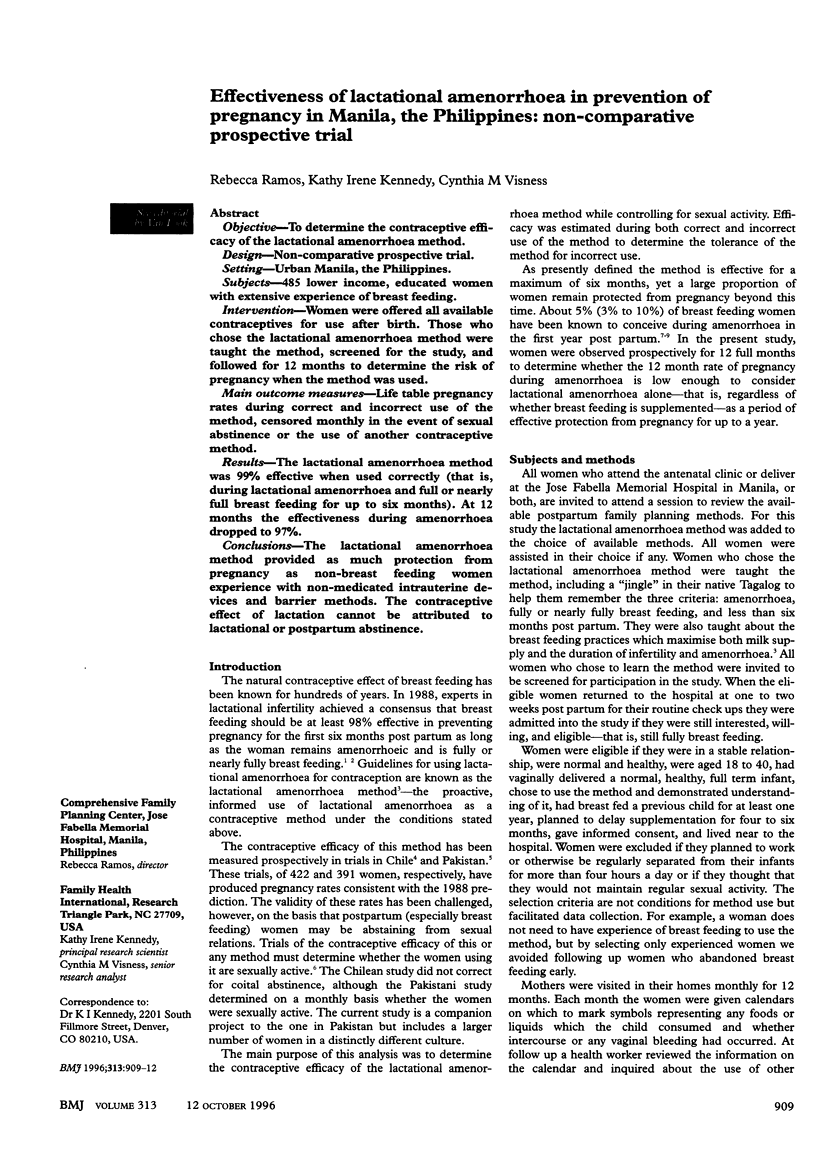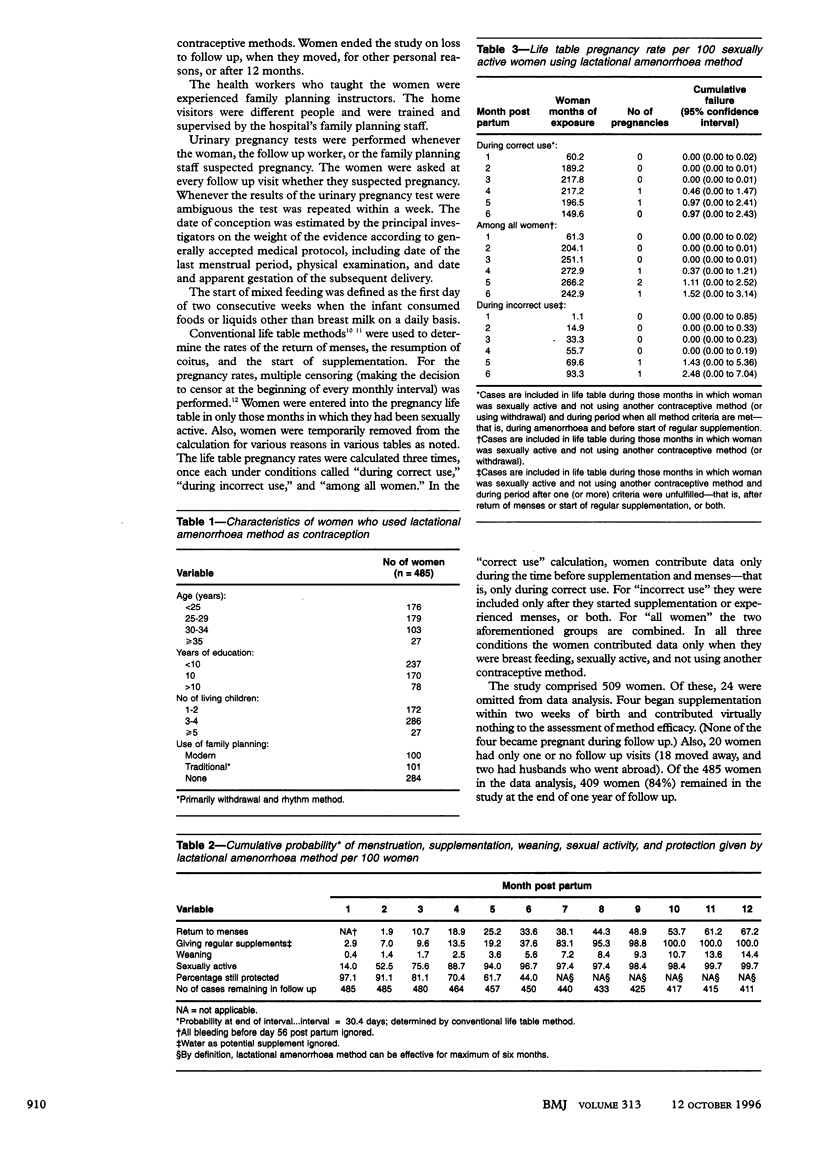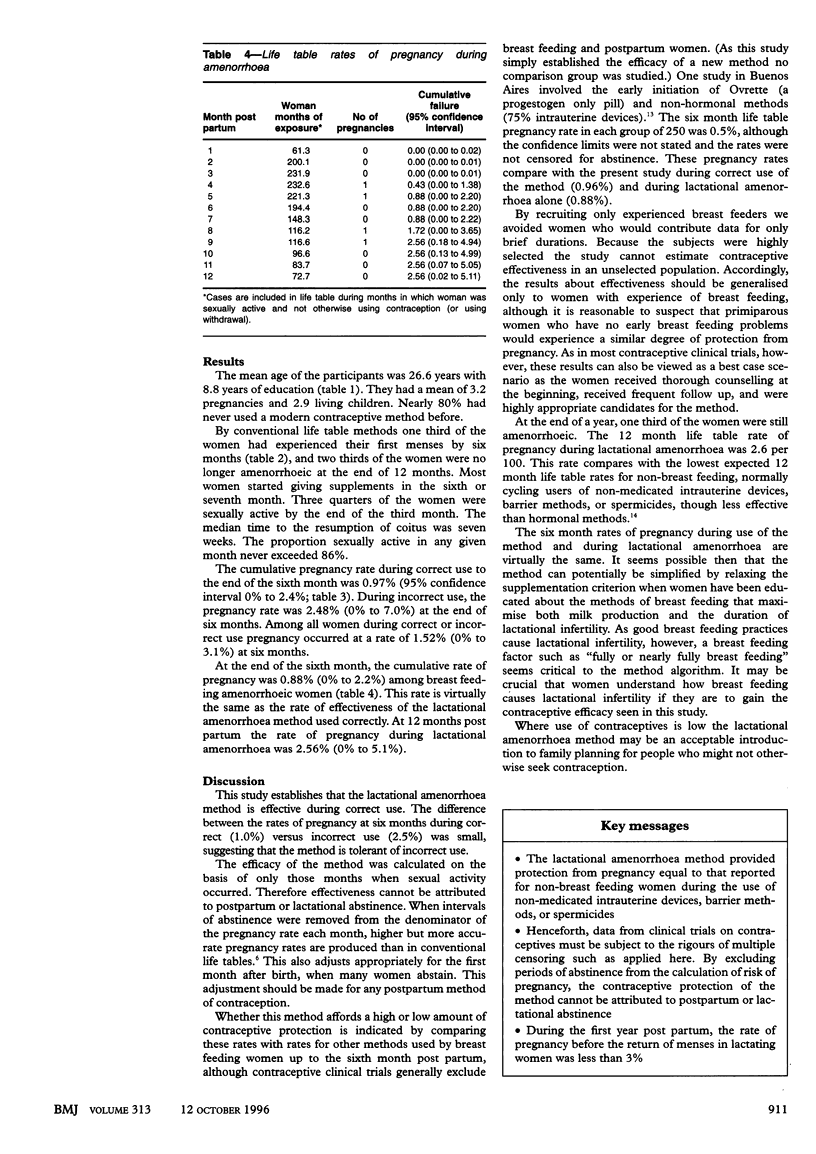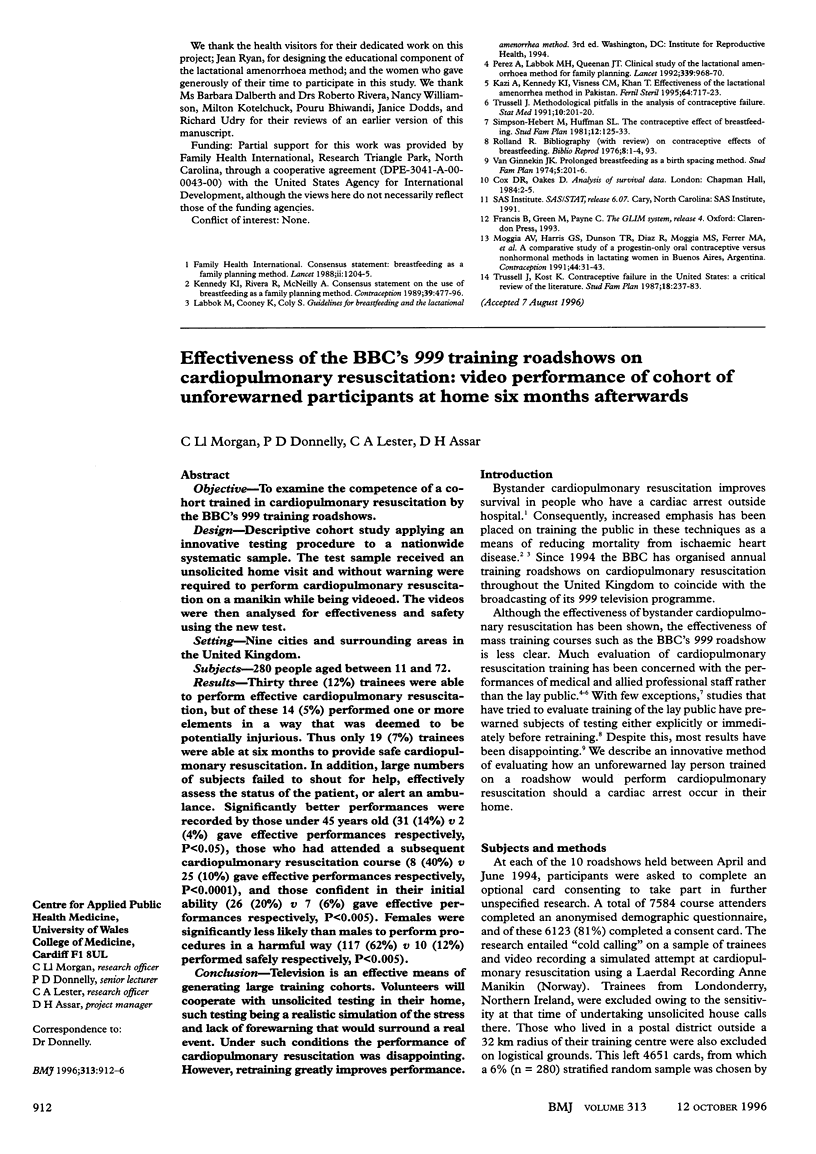Abstract
OBJECTIVE: To determine the contraceptive efficacy of the lactational amenorrhoea method. DESIGN: Non-comparative prospective trial. SETTING: Urban Manila, the Philippines. SUBJECTS: 485 lower income, educated women with extensive experience of breast feeding. INTERVENTION: Women were offered all available contraceptives for use after birth. Those who chose the lactational amenorrhoea method were taught the method, screened for the study, and followed for 12 months to determine the risk of pregnancy when the method was used. MAIN OUTCOME MEASURES: Life table pregnancy rates during correct and incorrect use of the method, censored monthly in the event of sexual abstinence or the use of another contraceptive method. RESULTS: The lactational amenorrhoea method was 99% effective when used correctly (that is, during lactational amenorrhoea and full or nearly full breast feeding for up to six months). At 12 months the effectiveness during amenorrhoea dropped to 97%. CONCLUSIONS: The lactational amenorrhoea method provided as much protection from pregnancy as non-breast feeding women experience with non-medicated intrauterine devices and barrier methods. The contraceptive effect of lactation cannot be attributed to lactational or postpartum abstinence.
Full text
PDF



Selected References
These references are in PubMed. This may not be the complete list of references from this article.
- Kazi A., Kennedy K. I., Visness C. M., Khan T. Effectiveness of the lactational amenorrhea method in Pakistan. Fertil Steril. 1995 Oct;64(4):717–723. doi: 10.1016/s0015-0282(16)57845-5. [DOI] [PubMed] [Google Scholar]
- Kennedy K. I., Rivera R., McNeilly A. S. Consensus statement on the use of breastfeeding as a family planning method. Contraception. 1989 May;39(5):477–496. doi: 10.1016/0010-7824(89)90103-0. [DOI] [PubMed] [Google Scholar]
- Moggia A. V., Harris G. S., Dunson T. R., Diaz R., Moggia M. S., Ferrer M. A., McMullen S. L. A comparative study of a progestin-only oral contraceptive versus non-hormonal methods in lactating women in Buenos Aires, Argentina. Contraception. 1991 Jul;44(1):31–43. doi: 10.1016/0010-7824(91)90104-n. [DOI] [PubMed] [Google Scholar]
- Pérez A., Labbok M. H., Queenan J. T. Clinical study of the lactational amenorrhoea method for family planning. Lancet. 1992 Apr 18;339(8799):968–970. doi: 10.1016/0140-6736(92)91538-j. [DOI] [PubMed] [Google Scholar]
- Simpson-Hebert M., Huffman S. L. The contraceptive effect of breastfeeding. Stud Fam Plann. 1981 Apr;12(4):125–133. [PubMed] [Google Scholar]
- Trussell J., Kost K. Contraceptive failure in the United States: a critical review of the literature. Stud Fam Plann. 1987 Sep-Oct;18(5):237–283. [PubMed] [Google Scholar]
- Trussell J. Methodological pitfalls in the analysis of contraceptive failure. Stat Med. 1991 Feb;10(2):201–220. doi: 10.1002/sim.4780100206. [DOI] [PubMed] [Google Scholar]


